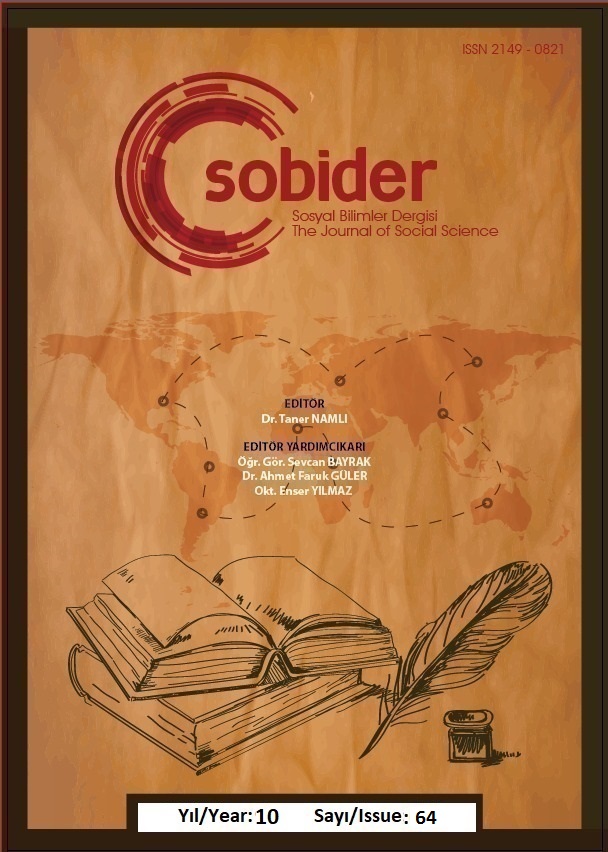Author :
Abstract
Hikaye anlatımları eğitimin her alanında kullanılan bir yöntemdir. Sebebi ise hikayelerin bilgileri somutlaştırmasından dolayıdır. Ayrıca hikayeler öğrencilerin hayal güçlerin gelişmesinde, yaratıcılıklarının artmasında, problem çözme becerilerinin gelişmesinde, dil ve sosyal gelişimlerinin olumlu yönde ilerlemesinde önemlidir. Teknolojinin gelişimiyle hikayeler, dijital hikaye tanımını çıkarmıştır. Dijital hikaye yöntemi, interaktif bir ortamda grafik, ses, resim, müzik, görüntü gibi çoklu ortam araçları kullanılarak hikayenin anlatılmasının sunulmasıdır. Dijital hikaye ile öğrenciler hikaye yazabilmekte, hikayelerini çoklu ortam araçları ile zenginleştirmekte ve hikayelerini paylaşmaktadır. Bu şekilde, hikaye yazan bir öğrenci üst düzey bilişsel etkinliklerle kalıcı öğrenme sağlar. Bu yönüyle dijital hikaye yöntemi eğitim açısında çok ehemmiyetlidir. Sonuç olarak bu çalışmada ilkokulda dijital hikaye yönteminin kullanımı ile ilgili literatür destekli açıklamaların sunulması amaçlanmaktadır. Sonuç olarak dijital hikaye yöntemi sürecinde öğrenciler derse aktif katılım sağlar. Dijital hikaye yöntemi uygulamasını öğrenciler eğlenceli bulabilir. Bu durum öğrencilerin tutum ve güdülenmelerini olumlu yönde artırabilir. İçeriğin görsel, işitsel materyallerle desteklenmesi konuyu olan dikkati artırabilir. Teknolojik araçlarla desteklenmesi, günümüz koşullarına uygun eğitim sağlar. 21. yüzyılın gelişen teknolojisi ile öğretimle ilgili her alanda teknoloji ile entegre olan okuryazarlık becerilerinin gelişimine yönelik etkinlikler düzenlenmelidir. Teknoloji ile entegre olan okuryazarlık becerilerinin gelişimine dijital hikaye yöntemi etkili bir yöntem olarak kullanılabilir. Dijital hikaye yöntemi öğretimin her kademesinde konuların anlaşılmasını sağlamak ve konuları anlamlandırmada bir yöntem olarak yer almalıdır.
Keywords
Abstract
Storytelling is a method used in all areas of education. The reason is because the stories embody the information. In addition, stories are important in the development of students' imaginations, increasing their creativity, developing problem-solving skills, and improving their language and social development in a positive way. With the development of technology, stories have emerged the definition of digital story. The digital story method is the presentation of the story by using multimedia tools such as graphics, sound, picture, music, image in an interactive environment. With the digital story, students can write stories, enrich their stories with multimedia tools and share their stories. In this way, a student who writes a story provides permanent learning through high-level cognitive activities. In this respect, the digital story method is very important in terms of education. As a result, in this study, it is aimed to present literature-supported explanations about the use of digital story method in primary school. As a result, students actively participate in the lesson in the process of digital story method. Students may find the digital story method application fun. This situation can increase students' attitudes and motivation positively. Supporting the content with visual and auditory materials can increase the attention to the subject. Supporting it with technological tools provides education in accordance with today's conditions. With the developing technology of the 21st century, activities should be organized for the development of literacy skills integrated with technology in every field related to teaching. The digital story method can be used as an effective method for the development of literacy skills integrated with technology. The digital story method should be included in all levels of education as a method to ensure that the subjects are understood and to make sense of the subjects.





